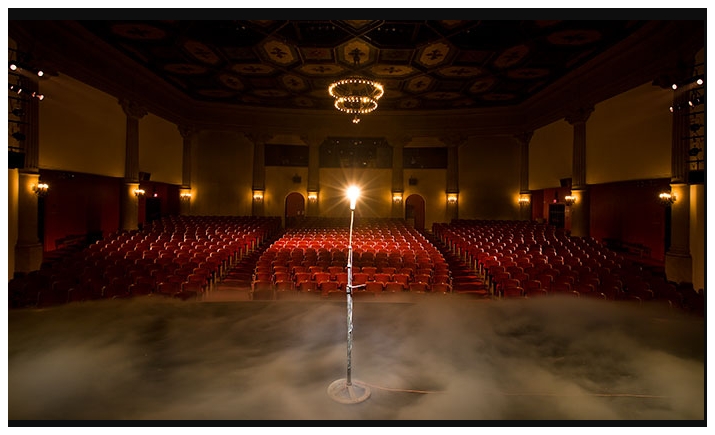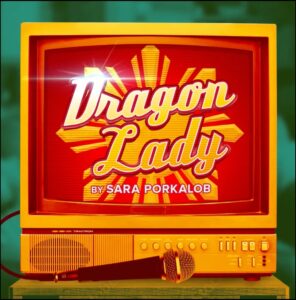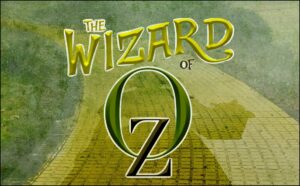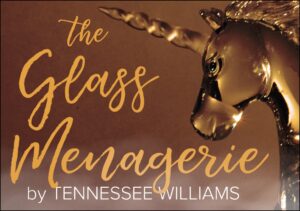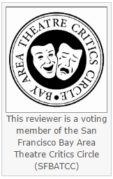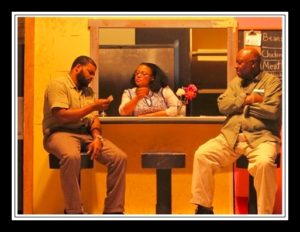By Kris Neely and Barry Willis
Dear Theater Professionals and Fellow Critics,
Aisle Seat Review’s (ASR) management team of Kris Neely (Owner, Editor-in-Chief) and Barry Willis (Senior Executive Editor and Writer) want to address an issue that some have found confusing or contentious: ASR’s theater review scoring system ranges from 0.00 to 5.00 but disallows either 0.00 or 5.00 ratings for any theatrical production or for any performance aspect (performance, stagecraft, etc.) Clarifying why such an approach is valid and important for maintaining the integrity of ASR’s theater criticism and respecting the art it speaks to.
We understand that the notion of imperfection is not always comfortable, especially regarding the painstakingly complex task of creating and evaluating any art.
The Diverse Voices Behind Our Reviews
ASR’s critics are not just writers—they represent a tapestry of experience across theater arts. Our team encapsulates a wide range of expertise, including seasoned journalists, former theater professors, theater board members, and veterans of stage and screen.
Every one of our nine Nor Cal critics is a voting member of the San Francisco Bay Area Theatre Critics Circle (SFBATCC), assuring that our reviews emanate not merely from knowledge but also from a profound passion and a solid history of and reverence for, the theater and theater arts and artists.
Furthermore, ASR’s coverage model also demonstrated our dedication to the diversity of Bay Area theater. Even a simple analysis of San Francisco to Antioch and Santa Rosa to San Jose reveals that ASR’s coverage model exceeds 4,500 square miles.
The Dual Objectives of Criticism
It is essential to differentiate the expectations of theater professionals and a critique website like ours, each with contrasting objectives. Theater companies, actors, and production artists naturally seek validation for their labor-intensive, experienced-based, and painstakingly-educated artistic endeavors.
This quest goes beyond artistic appreciation; high ratings translate to broader acclaim and increased ticket sales and funding opportunities. For artists aspiring to carve a niche in theater, ratings can contribute to following their passion—or enduring mundane jobs. Any theater’s desire for a favorable review and its artistic professionals’ individual aspirations are intrinsically linked to quests for financial stability, peer recognition, and reputational growth.
Conversely, a critique website operates from a more distant standpoint, though its responsibility is no less significant. Our primary commitment is with our readers, the expansive theater community, and, importantly, the ticket-buying public, all asking ASR to deliver precise and unbiased performance and value evaluations of productions.
That is why at ASR, we aim to “call balls-and-strikes” and to demonstrate a neutral adjudication of each show. We aim to delineate any show’s strengths and weaknesses without, we hope, our judgment being clouded by bias, preconceptions, or inclinations.
This perspective does not diminish our subjective experience of a production. It focuses on appraising a show’s substance, delivery, technical consistency, and resonance with and for an audience. This nuanced approach does not reflect a lack of esteem or admiration for theatrical craft; instead, it emanates from our unique vantage point within the sprawling theater landscape.
Decoding the ‘Broadway’ Shorthand in ASR’s Scoring System
ASR’s discussions about theater and its intricate evaluations tap into a rich well of critical experiences and understandings. Like any community with a history of intense debates and discussions, we have developed our own internal language—a convenient shorthand. This language allows us to concisely encapsulate complex ideas, past experiences, or general sentiments, enabling more efficient and pointed conversations.
And so, over the years, we have invoked references to past shows or industry standards to make a point. For example, mentioning “Another Antioch The Foreigner” (a made-up example) is not just about recalling a particular show but is also an embodiment of a specific sentiment or quality we felt about a production that might not have met our expectations.
Similarly, saying, “Is their Christmas Carol as good as CenterRep’s?” encapsulates the shared experiences and judgments of a recurring version of the Dickens classic that has few peers in all of the Bay Area.
Perhaps the most nuanced shorthand we use revolves around the term “Broadway.” In the universe of American theater, “Broadway” is not merely a location or a production level; it is emblematic of the zenith of theatrical arts achievements. Saying something is “Broadway” taps into the collective consciousness of theater enthusiasts, critics, and artists, evoking images of unparalleled quality, the crème de la crème of actors, directors, producers, facilities, top-tier technical expertise, and budgets.
However, when we say a play under critique at ASR is “Not Broadway,” we are not deriding its quality, dismissing its value, or judging its talent base. Instead, it is our internal-only discussion/shorthand way of appreciating the production’s hard work and dedication while noting that it might not have reached the pinnacle of theatrical excellence one might associate with a mainline Broadway production.
On the flip side, an internal discussion at ASR that a 4.75-rated show is “Almost Broadway” is not a literal stamp of its “Broadway-worthiness.” It is conceptual, marrying the notion that a ‘perfect’ 5.00 in art is elusive (and, as we say, not possible) concerning the production quality presented. Our “Almost Broadway” idea is that the show, as commendable as it is, might soar even higher with the resources, talent pool, and budget typically associated with a Broadway smash.
To be clear: Inside ASR, this shorthand does not devalue (or overvalue) any production. It is not meant as praise or an insult. It is a conceptual sightline. An abstract mile marker. A convenience for communication inside ASR. Along with other shorthand terms ASR has developed over the past eight years, it offers a shared lexicon to convey complex sentiments, ensuring our discussions remain relative, vibrant, and efficient.
Zero to Five: The Myth of Zero Value
Theater is a collaborative endeavor that requires the confluence of various art forms—acting, direction, writing, music, set design, lighting, and costume design, among others. Even if a production falls dramatically short in one or multiple areas, it is almost impossible for it to have no redeeming qualities whatsoever.
A 0.00 rating would imply a nullification of effort, a denial of even the attempt to create something meaningful. It would be disrespectful to the labor, however flawed, that has gone into creating a piece of art. It would not only be devastating to the morale of those involved in the production but would also inhibit constructive criticism. The lowest scores in our range should indicate a severe need for improvement, not oblivion.
The Elusiveness of Perfection: Why We Do Not Have a “5-Star” Rating System
On the flip side, a score of 5.00 suggests perfection—again, a feat unattainable in the art world — which is inherently subjective and ever-evolving. What might be considered a perfect performance today could be seen as dated or flawed in the context of future artistic innovations, new theater technologies, and social shifts.
Moreover, even the most revered productions have quirks or elements that divide opinion.
Art’s beauty and value often lie in its juxtaposition of blindingly brilliant efforts, debatable imperfections, and its ability to provoke thought, incite debate, and leave room for interpretation. Giving any production a ‘perfect’ score risks stifling that discourse and undermines the essence of what makes art so compelling and richly complex in the first place.
Thus, if one cannot conceive of a production that would merit a 0.00 score, it should be equally impossible to imagine a “perfect” 5.00 score across any or every aspect of its production. (That is a huge reason why ASR stopped using a so-called “Five Star” rating system back in 2018. We do not have a “5 Star” rating system now but a 0.00-to-5.00 rating system.
That said, astute readers will note that, in the past, we have given 5.00 points in selected reviews, such as for the national touring production of The Band’s Visit a couple of years ago, a show that many thought was Broadway quality. Today, even a show this good would rate a 4.90 at ASR.
One exception: Even amidst an internal swirl of controversy, ASR has been known to award 5.00 ratings for selected scripts and scores, for example, the score from West Side Story, or the script from To Kill a Mockingbird, or most Shakespeare scripts. This practice will end shortly. More on that later.
Reputation and Credibility
ASR’s long-term plan is to be a viable commercial venture supported by advertising. And to labor to maintain a reputation for being fair and even-handed — even if that means occasionally dispensing some “tough love” in a review.
If critics who write for our website were to hand out 5.00 scores freely, it would seriously jeopardize our credibility. Any grading system loses meaning and utility if its upper limit is frequently touched. Readers rely on critics to be discerning to help them navigate the vast and varied landscape of theatrical productions. A 5.00 score, if doled out indiscriminately, would dilute the weight and significance of all our reviews.
Imagine overhearing a conversation between two theater folks:
SHE: “Hey, ASR gave us a 5.0!”
HE: “So what? They give everyone and everything a 5.0.”
This reflects not just a casual dismissal but a severe undermining of the role that critics play in the theater ecosystem. It would indicate that our evaluations are meaningless, serving more as empty applause than as considered analyses.
The answer lies in the use of the ratings score as a guidepost—not as an ultimate judgment. A 4.75 score would indicate an exceptional, perhaps groundbreaking, production but would also implicitly acknowledge room for debate, interpretation, and, yes, improvement.
Similarly, a score at or above 0.10 would recognize the absence of complete worthlessness, emphasizing that every production has at least some redeemable quality or lesson to offer, even if it is a lesson in how not to do things.
At ASR, we aim to recognize the multi-dimensional aspects of theater while maintaining a grading system that reflects both highs and lows without resorting to absolutes. We believe such a nuanced approach encourages improvement, invites dialogue, and, most importantly, respects art’s ever-changing, ever-subjective nature.
Not Change For Change’s Sake
We hope this helps clear the air on our current scoring model, our use of shorthand in internal discussions, and our efforts to maintain our neutrality and credibility as a critical organization.
However, it is essential to add this in closing: for almost a year, ASR’s management has been discussing eliminating our 5.00-based rating system soon, the same way we did our 5-star rating system years ago. Our new, non-numerical rating system has been selected and will appear in ASR reviews starting in October 2023.
Thank you for your understanding and for your invaluable contributions to the theater world.
Sincerely,
Kris Neely and Barry Willis, Aisle Seat Review
E-mail: staff@aisleseatreview.com
P.S.
Thank you for those of you who have raised concerns about the reference to “Broadway” as a benchmark in ASR’s current scoring system. We deeply value all feedback and the opportunity here to clarify our intent.
We wholeheartedly agree that some of the most impactful, innovative, and profound theatrical experiences can be found in local and regional theaters across the USA. The Bay Area boasts an amazingly rich tapestry of theatrical talent and has been the birthplace of numerous groundbreaking productions. We never intend to diminish or shade that. In 98% of the shows ASR reviews, the subject or measure of “Broadway” is absent.
At ASR, our primary focus is on celebrating, critiquing, and promoting local Bay Area theater. We are deeply committed to recognizing the brilliance, diversity, and innovation that our local and regional theaters bring to the table, year after year, as our reviews clearly demonstrate. Our reviews and ratings aim to provide constructive feedback to these productions.
We deeply respect and cherish the myriad forms of theater we are honored to review and we understand and appreciate that each brings its unique flavor, essence, and invaluable contributions to the world Bay Area performing arts.
-30-
 When I started Aisle Seat Review almost a decade ago, I wasn’t at all sure how long our run would be. But I was damned determined that we would give it our absolute best. And now, after all this time and over five hundred posts, it’s time to “Turn off the ghost light” and wrap the show.
When I started Aisle Seat Review almost a decade ago, I wasn’t at all sure how long our run would be. But I was damned determined that we would give it our absolute best. And now, after all this time and over five hundred posts, it’s time to “Turn off the ghost light” and wrap the show.
